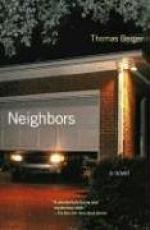|
This section contains 128 words (approx. 1 page at 300 words per page) |

|
The fiction of Franz Kafka is the most obvious influence on Neighbors, an influence acknowledged by Berger himself.
The novel manages to capture the surrealistic or nightmarish tone of a Kafka story, which begins in an apparently realistic situation and moves to the farther reaches of the fantastic. Some other influences have already been suggested: the Tolstoy story, "The Death of Ivan Ilych," and the work of European absurdists and existentialists like Samuel Beckett, Eugene lonesco, Jean-Paul Sartre, and Albert Camus. The dark fables of Kurt Vonnegut, like Slaughterhouse-Five (1969; see separate entry), may be another precedent; but the darker side of Berger's own earlier novels—especially Crazy in Berlin (1958) and Who Is Teddy Villanova?
(1977)—is probably equally significant as a literary precedent.
|
This section contains 128 words (approx. 1 page at 300 words per page) |

|




